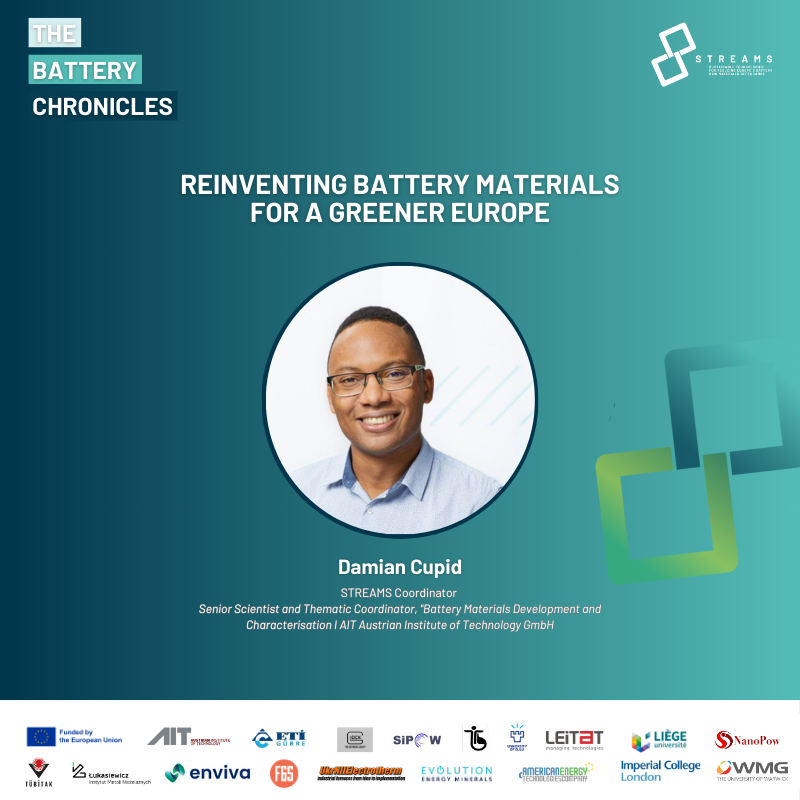Why Europe needs to secure its battery materials
Lithium-ion batteries are key technologies that are expected to reduce greenhouse emissions from the transportation sector, facilitate the use of energy from renewable sources, and in the long-term, support the green transition to climate neutrality. To ensure long battery life and safe performance, lithium-ion batteries rely heavily on the use of high-purity raw materials to synthesise high-quality cathodes and anodes.
On the cathode side, lithium, cobalt, nickel, and manganese sources are the most important, whereas graphite is the main component for the anode. Many of these materials are currently sourced in countries outside of the E.U., thereby making European battery production susceptible to supply chain disruptions, price volatility of the material’s market, and political, social, and economic instabilities in supplier countries. In addition, the sourcing of raw materials from finite reserves is certainly not the best solution to increase the sustainability of lithium-ion batteries.
Therefore, we are challenged to design processes and technologies that can use materials from different primary and secondary sources within Europe to synthesise high-quality precursor and battery active materials. Needless to say, the processes must be wholistic, resilient and robust enough to withstand fluctuations in the battery materials’ market.
STREAMS: A new approach to greener batteries
STREAMS addresses these challenges on a fundamental level by developing a set of technologies that target the sustainable development of the European battery chain. Often, key materials originating from primary and secondary sources contain significant amounts of impurities. These must be removed in a series of purification and separation steps to achieve battery-grade precursors. These steps should be energy-efficient, use low amounts of process water, and, of course, not release toxic chemicals into the environment. At the same time, the steps and procedures must be industrially viable, thereby facilitating their easy uptake by the large-scale providers of battery raw materials to the market. The STREAMS’ vision is for Europe to be able to produce battery active materials, and their associated high-purity precursors, at competitive prices with low environmental impact. Sustainability is a key aspect of this approach, and cradle-to-cradle solutions must be developed.
Let’s briefly explore the technological details. On the cathode side, STREAMS develops solvent-extraction, membrane separation, hydrometallurgical, deep-eutectic, and electrowinning solutions to purify the battery black mass, which is obtained during the recycling of end-of-life cells. These techniques and technologies are also being applied to mining tailings, which are a secondary source of cobalt, nickel and manganese. Lithium is being extracted from spodumene, a naturally occurring ore containing some amounts of lithium, as well as from the Bayer liquor, which is a side-product of a large-scale industrial process.
From Research to Industry: Scaling Up Sustainable Solutions
On the anode side, STREAMS assesses the processability of natural graphite into a battery-grade material, recovers and rehabilitates graphite from end-of-life cells, processes biochar into a conductive additive, and incorporates silicon from end-of-life photovoltaic panels into silicon-carbon composites. STREAMS subjects all of these technologies to comprehensive life cycle and sustainability analyses, ensuring their viability and low environmental and social impacts.
Building a Stronger, Greener European Battery Market
At the end of STREAMS, we hope to have taken these technologies to a higher technology readiness level (TRL 5), preparing the way for their uptake by the European battery materials industry. Our dream is to have made a significant contribution to improving the sustainability of the European battery market, while, at the same time, making it more robust, competitive, and safe. Let’s make this dream into reality!
You can download the full article here.

